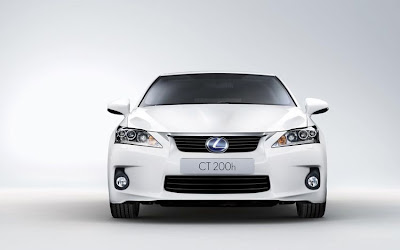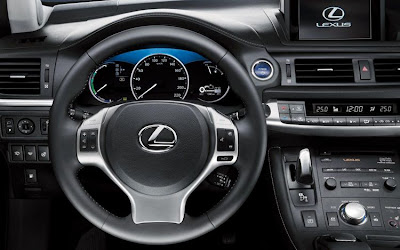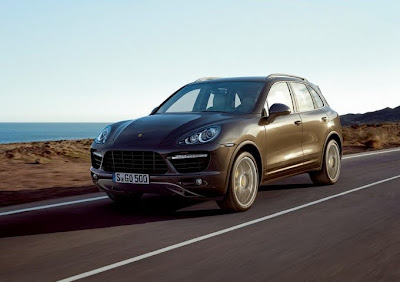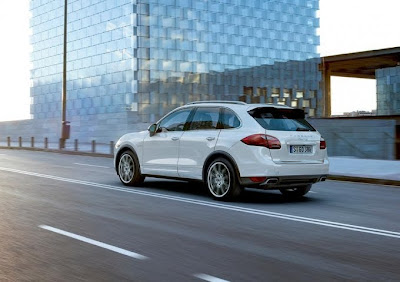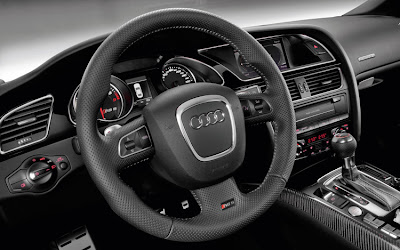Demi Lovato 01
-
Demi Lovato Demi Lovato Demi Lovato Demi Lovato Demi Lovato Demi Lovato
Demi Lovato Demi Lovato Demi Lovato Demi Lovato Demi Lovato Demi Lovato
Saturday, February 27, 2010
Friday, February 26, 2010
bmw x5 review
The BMW X5 is a luxury crossover SUV introduced in 1999. It was BMW's first SUV (Sport Utility Vehicle) also known as "Four-by-Four" (4x4) in the UK. It features all-wheel drive and is available with either manual or automatic transmission (the manual transmission option was dropped from the 2006 model year onwards). A range of gasoline inline-6s, V8s and diesel engines are offered.
BMW describes the X5 as a Sport Activity Vehicle (SAV) rather than an SUV, to emphasize its on-road ability despite its size. Like the Lexus RX 300 and Mercedes M-Class, the X5 heralded the shift from truck-based body-on-frame SUVs to sedan-based crossovers that would come to fruition in the late 2000s.
Until 2009, all X5s were manufactured in Spartanburg, South Carolina. Since July 2009, they are also assembled in Kaliningrad, Russia by Avtotor.
In 2003, BMW launched the smaller X3, which uses the "X" prefix for the 4 wheel drive system or BMW "X" drive system and the BMW SAVs which were derivatives of the BMW number-series models.
BMW describes the X5 as a Sport Activity Vehicle (SAV) rather than an SUV, to emphasize its on-road ability despite its size. Like the Lexus RX 300 and Mercedes M-Class, the X5 heralded the shift from truck-based body-on-frame SUVs to sedan-based crossovers that would come to fruition in the late 2000s.
Until 2009, all X5s were manufactured in Spartanburg, South Carolina. Since July 2009, they are also assembled in Kaliningrad, Russia by Avtotor.
In 2003, BMW launched the smaller X3, which uses the "X" prefix for the 4 wheel drive system or BMW "X" drive system and the BMW SAVs which were derivatives of the BMW number-series models.
bmw x5
2012 Ampera Opel Electric Concept Car
2012 Ampera Opel Electric Concept Car
The Opel Ampera electric car promises 500km (~300 miles) reach. For trips up to 60 km, the five-door, four-seat hatchback runs on electricity stored in the 16 kWh, lithium-ion battery, and emits zero CO2. When the battery’s energy is depleted, electricity from an on-board engine-generator extends the Ampera’s range to more than 500 km The Ampera looks cooler than the Chevy Volt, but then again the Volt looked also amazing as a concept and was then toned down quite a bit.
The five-door, four-seat Ampera uses a design language which incorporates several styling cues from the Flextreme and GTC Concept show cars.
The Ampera’s wheels are turned electrically at all times and speeds. The Ampera can be plugged into any household 230v outlet for charging. GM Europe is analyzing the requirements of a recharging infrastructure for plug-in electric cars with energy companies, including Iberdrola of Spain.
GM plans to put the Ampera into production in late 2011, offering it also with right-hand drive in the UK by Opel’s sister-brand, Vauxhall.
The revolutionary Opel Ampera will be the first emission-free, electrically driven automobile in Europe suitable for everyday driving.
"Driving electrically is not only about ecology," said global vehicle line executive and chief engineer, Frank Weber. "Driving electrically is also great fun. Instantaneous, silent torque of 370 Newton meters under your right foot feels like flying!"
The Ampera’s exterior design takes up cues from the Opel Flextreme and GTC Concept show cars. For example, it features dramatic, boomerang-like headlights that seamlessly integrate with the lower fog lights.
Opel Ampera ConceptThe car has a dynamic, almost aggressive low stance seen most prominently in the front and tail. The new, bold Opel logo emblazes the front grill and the chrome bar across the back.
Vertical slots in the outboard edges of the rear bumper not only give the car a low sporty look but also play a key role in creating a clean separation feature for the air, supporting the highly efficient aerodynamic performance.
GM engineers and designers worked together to optimize the air flow around the front fascia and outside mirrors of the Ampera. Significant attention was also given to the rear with a specifically designed spoiler and clean separation features.
2012 Ampera Opel Electric Concept Car
Lightweight materials were added in the form of clear polycarbonate covers to the front grille and disk inserts on the 17-inch, five-spoke sport alloy wheels. These helped to reduce aerodynamic drag in critical airflow areas.
The interior features a Jet Black interior combined with Spice Red accents and Dark Argent Metallic paint on the instrument panel’s center stack for a sporty look. The doors’ décor picks up on the car’s electric nature through the use of iconic themes.
With an integrated shifter, two information displays and touch-sensitive infotainment center, the Ampera delivers an all-electrical user experience. The storage capacity is 301 liters.
“On the Ampera we’ve continued to challenge the norm and have searched for new and exciting color and material combinations. To support the car’s innovative character we’ve worked with experimental trims and paints that you will see more of in future Opel models” said John Puskar, Director, Interior Design for GM Europe.
Opel estimates that an electrically driven kilometer in the Opel Ampera will cost about one-fifth compared to a conventional gasoline vehicle, at current fuel prices.
2010 Honda Accord Crosstour
2010 Honda Accord Crosstour
Let’s face it—the latest trend of sleek-lined crossovers is here to stay, and we can look forward to more and more manufacturers creating new vehicles based on this larger design ethos. (See what you’ve done, BMW X6?) So Honda, known for game-changing products, was certain to remind us that the brand new Accord Crosstour had been in the works for many years. “We had been planning this one since before anyone even saw the X6,” we were assured by one executive. When we asked if the Crosstour was in any way developed alongside the recently released Acura ZDX, we were told that the two vehicles have nothing in common with one another. In fact, Honda pointed out that while the ZDX was designed and engineered in America, the Crosstour is, for the most part, the fruit of Japanese labor.
But is it unique? Aside from the styling, there isn’t a whole lot of newness to this car. As the vehicle’s name suggests, the Crosstour is based on the trusty Accord sedan, and instead of dropping the Accord name, Honda left it in place to build better familiarity within its consumer base. Truth be told, about 60 percent of the Crosstour is made up of standard Accord parts, and Honda won’t shy away from telling anyone and everyone that the Crosstour is an extension of the Accord lineup. The automaker wants consumers to view this vehicle as a more premium version of the Accord, but one that offers the space and functionality of a crossover. While this all makes a whole lot of sense in concept, the final product is a bit of an odd duck.
What Honda has created here is a vehicle that is relatively good to drive and has a lot of sedan-like road-going characteristics, but doesn’t make a whole lot of sense as a crossover. The Crosstour’s good-to-drive-ness does give it an edge over more un-involving vehicles like the Venza or Murano, though it’s a little hard to see how it might capture customers from those stalwarts, to say nothing of its own brothers. As a crossover, this vehicle has an odd fit into Honda’s product line. To wit, the CR-V is only four-tenths of an inch taller than the Crosstour and it rides on a much shorter wheelbase, and yet it boasts 21.6 more cubic feet of storage space behind the front seats. What’s more, the CR-V offers more headroom and legroom for front passengers, and more legroom in the second row. And price? A fully loaded CR-V with all-wheel drive is only about $1000 more than a base, front-drive Crosstour. Doesn’t make a whole lot of sense to us.
That said, a majorly redeeming quality of the Crosstour is how good it is to drive. The only powertrain available is the Accord-sourced 3.5-liter V-6, which produces 271 horsepower and 254 pound-feet of torque, mated to a five-speed automatic transmission. Curiously, no four-cylinder engine is available, though engineers explained that putting a four-pot mill in the Crosstour only netted one extra mile per gallon, so they opted to only offer a V-6. Still, a four-cylinder version could have lowered the car’s starting MSRP. Front-wheel drive is standard and all-wheel drive is optional, but Honda only expects a small margin of all Crosstour sales to have power routed to all four wheels. (Don’t expect to see all-wheel drive making its way into the Accord sedan anytime soon, either.) Our front-drive test car felt peppy while being tossed along back roads, but was subject to a bit of body roll and understeer in the corners.
We mostly attribute this to the skinny eighteen-inch rubber that higher-level Crosstours are equipped with; the Toyota Venza and Ford Flex are much more competent through the bends, mostly due to their wider tracks and beefier tires. The Crosstour does, however, benefit from cornering shift control, which holds the selected gear through a turn to eliminate the transmission’s tendency to change gears. This allows for a much more linear acceleration feel upon exiting a turn without needing to downshift to a lower gear to achieve max power. It’s smooth, too—something that we can appreciate in a vehicle that isn’t meant to be a nimble sports car. Since most of the Crosstour’s underpinnings are Accord stock, we weren’t surprised to experience crisp turning and lots of driver feedback through the steering wheel. Larger brakes have been fitted at all four corners to account for the added weight of the crossover versus the sedan, and they are appreciated.
So while the Crosstour is relatively good to drive and may do the job of a crossover rather well, it just doesn’t make sense as a Honda. The automaker will now find this vehicle competing head-on against its CR-V, Pilot, and Accord, and because its only unique aspect—the styling—isn’t a huge success, we can’t see it exactly flying off of dealer lots. If consumers judge this book by its cover, the Crosstour won’t be terribly appealing. Too bad really, as it’s a CUV that would be a better-than-most choice for enthusiast drivers. We can only hope that the Crosstour’s strong road manners are enough to win over the consumer set.
Source:-thecarconnection.com
Honda Insight 2010
Honda Insight 2010
Honda’s new Insight borrows from many points, parts and places in the company’s past in the search for the highest possible real-world fuel economy. You won’t be saving the world for multiple generations of gorgeous creatures such as yourself, but you’ll feel good about trying. And since you already look good, feeling good becomes the #1 issue. Well, maybe doing good is up there, too.
Honda has one of the longest histories in Automobiledom of making conscious big product decisions in favor of better efficiency. Having started on two wheels, company founder Soichiro Honda pushed his engineers to perfect four-stroke bike engines when the world was mostly wedded to gas- and oil- consuming two-strokers. This set the tone for years.
In late 1999, Honda issued its first Insight. It was the first gas-electric hybrid actually sold in the U.S. market and the most fuel efficient car sold in the U.S. at the time. It only sat two people and looked akin to an elongated egg; both factors limited its appeal. After a brief hiatus, Honda has resurrected the Insight as a larger vehicle with styling that is more inline with its primary competitor, the Toyota Prius. We spent some time with the 2010 Honda Insight recently.
Despite the mileage hullabaloo about hybrids and all the intricate engineering details to make as light a car as possible, everything is moot if the car doesn’t perform as it should. If the singer can’t cut the track, but looks pretty good, even the most narcissist fan would boo the hag offstage. In this regard, the 2010 Insight plays the part well. In careful city-only driving, it returned 42.1 mpg. Dedicated highway driving saw 47.8 mpg and the overall combined during the whole test period netted 43.4. On official ratings of 40/43, that’s exceptional.
Brush up on your speechifying, too. As you acclimate to hypermiling in the Insight and learn to drive most efficiently, the center instrument display doles out awards based on your ability to extract the best mileage from the Insight. Leaves and wreaths denote your level of Efficiency Royalty. Maybe Honda’s next generation system will use Oscar statues.
If you’ve driven a Prius or other Toyota hybrid, the Honda’s operation feels a bit different. While we never witnessed it doing so, the system can propel the car on electricity alone. We did witness the engine stopping under braking once below a certain speed (roughly 5 mph) and when stationary. So, put simply, where the Toyota’s system can propel the car using electric power alone, the Insight’s 1.3-liter four-cylinder engine seems to always propel the car, though assisted by the electric motor when additional power is called for. You can opt for a high(er)-efficiency mode by pushing the ECON button on the dash, which dials back the response rate of the throttle, lowers the rev range in which the CVT operates, adjusts air conditioning and cruise control parameters and lengthens engine-stop duration at traffic lights during idle time.
Starting at a base price of $20,510 including destination, the Insight undercuts the newly-redesigned 2010 Prius by $2,240, the latter’s base price being $22,750, including destination. That’s a significant 10% in a sector that’s getting more competitive. Toyota’s 2010 Prius line-up was introduced with lower pricing than the predecessor model, which means one big thing. The hybrid/hyper-economy car segment has been heating up for some time and appears only to get hotter as we head through the summer and fall.
SOurce:-gaywheels.com
Thursday, February 25, 2010
Subscribe to:
Comments (Atom)
Blog Archive
-
▼
2010
(3513)
-
▼
February
(123)
- bmw x1 images
- 2011 Lexus CT 200h Car Gallery
- 2011 Porsche Cayenne Car Wallpapers
- 2011 Audi RS 5 First Look
- bmw x5 review
- 2012 Ampera Opel Electric Concept Car
- 2010 Honda Accord Crosstour
- Honda Insight 2010
- bmw x6 pics
- mercedes benz cars
- Its Just Good To See Cool Cars
- 2008 Maserati Quattroporte Collezione Cento Pictures
- Bentley Continental GTC nice pics
- Sports cars pictures and wallpapers
- Audi A4 Tuning Images
- bentley brooklands pictures
- 2011 Maserati Granturismo Convertible
- 2011 Citroen DS3 R Car Gallery
- 2011 Volkswagen Polo GTI Pictures
- bentley continental gt cars images
- 2010 Aston Martin Rapide
- 2011 Lotus Elise Car Wallpapers
- VATH Mercedes E 500 Coupe Reviews
- VATH Mercedes E 500 Coupe Reviews
- Citroen DS3 Racing Edition Limited Design
- Citroen DS3 Racing Edition Limited Design
- German automaker has unveiled the 2010 Volkswagen ...
- German automaker has unveiled the 2010 Volkswagen ...
- Gator Bike covered in Alligator skin to the rescue
- Hand-carved skateboards by Doug McKee
- Mercedes Benz M Class Edition 10 Pictures
- cute cars
- Bumblebee Transformers Car
- Honda Exclusive Zeus
- Mazda 6
- Most Expensive Car Pictures - Aston Martin
- Smart Car Roadster Coupe Fastback For Sale
- 599 GTB CARS
- renault clio cars images
- 2010 Chevrolet Corvette
- Honda Civic Type R photo gallery
- Saleen S7
- 2010 Mini Roadster Concept Cars Pics
- Oliver von Feistmantl on Art Cars
- 2011 Jaguar XF S First Look
- Honda Blade CBR600 Style
- YAMAHA MODIFICATION MIO SOUL AIRBRUSH
- 2011 Audi A1 Pictures
- 2010 Nissan 370Z Black Edition Car Wallpapers
- 2011 Renault Megane Coupe Cabriolet
- 2011 BMW X5 Pictures
- Porsche Panamera
- Nissan GT R car Fire Lamp
- Ford Falcon DELUXE
- Holden Calais
- Toyota Supra JZA80
- BMW M3 E46
- Holden Torana
- Ford Falcon XR6 TURBO
- Ford Falcon XR6 EL
- Daewoo cars pictures
- New Mégane Coupé Cabriolet with Elegant Interior D...
- New Peugeot 207 S16 Special Edition 2010
- McLaren F1
- Porche Boxter 2010-2011
- 2010 Cadillac XTS Platinum Concept Cars
- MODIFIED HONDA CIVIC TYPE R
- MODIFIED HONDA CIVIC TYPE R
- New design futuristic Sintesi concept car for future
- Exotic design Aston Martin AMV10 concept car
- nissan skyline gtr cars pictures
- Amazing design Ferrari Dino concept car
- New Carlsson 2010 - C25 Super GT Modification Concept
- Toyota FT-HS Car Concept Gallery
- 2010 Volkswagen Golf R Pictures
- 2010 Audi R8 Spyder
- The New Toyota Auris 2010 with Full All The Details
- Motor Keren Keluaran Honda
- Bentley Arnage Cars
- 2010 CADILLAC CTS
- Job for Core Network Engineer
- Job for Hr Executive
- The New Born
- Welcome To CarsLegend Videos Centre:-
- Job for Admin Executive/Assistant/ Manager
- Job for Wireless Assistant/Manager
- Job for Call Center Agent
- Job for Associate Engineer
- Jobs for Telesales Executives
- 2011 Kia Sportage First Look
- 2011 Peugeot 408 Sedan Revealed in Beijing
- 2011 Infiniti FX Limited Edition Car Wallpapers
- 2010 Buick Enclave Pictures
- 2011 Peugeot 207 S16
- Subaru Ballistic
- Alien Style Citroen C2
- Team Lead
- Business Development Associate
- Jobs for Medical Representative in C Pharma
- Jobs for Web & Graphic Designer in BizXces, Lahore...
-
▼
February
(123)
